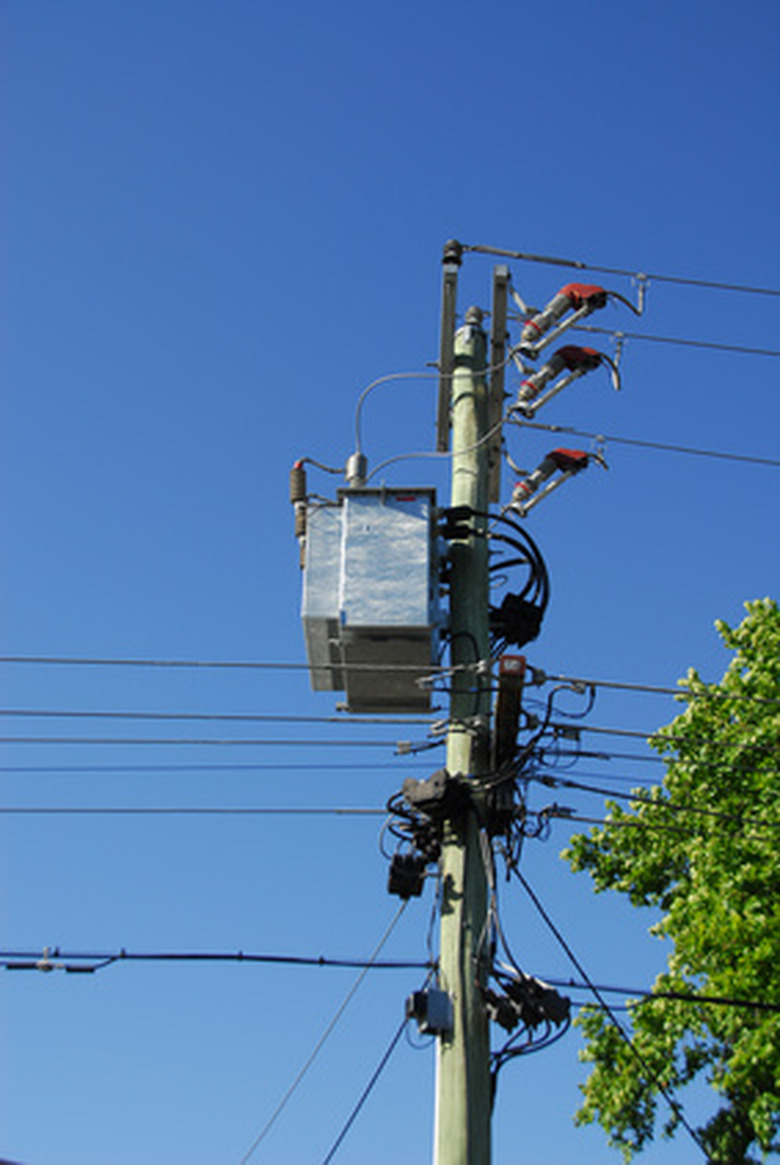How To Identify Wires On An Electrical Pole
The utility poles that distribute electricity and communications to our homes and businesses are so pervasive in the landscape that we seldom notice them. Yet, if we pay attention, we can identify the services they are carrying.
Most utility poles are known in the jargon of the business as "joint poles," because they carry the hardware of two or more companies. Vertical zones on joint poles are dedicated to various power distribution, cable and telephone service uses, usually in descending order. Identifying the wires on electrical poles is easy when you start at the top and work down.
Step 1
Locate the static wire at the very top of the pole. This is designed to redirect lightning away from the lower power-conducting lines to avoid induced power buildup and possible damage. The static line connects to a grounding conductor.
Step 2
Find the three transmission wires below the static line. This marks the beginning of the supply zone. These carry high voltage from generation facilities to substations. The three cables are labeled A, B and C, each carrying a different phase, spreading the voltage among the three wires. These wires carry between 69 and 200 kilovolts, to be redistributed to the feeder lines that service power company customers.
Step 3
Notice the primary cables, usually one to four wires all at the same elevation, supported by crossbars. These carry loads of five to 30 kilovolts. Just below the primary line is a step-down transformer. This cylindrical apparatus converts high voltage to the lower voltages needed for homes. A multi-grounded neutral cable just below the primary line provides a return path for the electricity.
Step 4
Observe the space between the multi-grounded neutral cable and the communication cables below it. This space is known as the "communication worker safety zone." This 30-inch safety zone protects the workers who service the lines. It separates the high-voltage lines from the communication lines, and provides some maneuvering room.
Step 5
Examine the lowest zone dedicated to communications: telephone, CATV and broadband. These lines are placed at least 8 feet above pedestrians and up to 27 feet over railroads. Utility poles descend 6 feet below the ground and are spaced 125 feet apart. They can reach heights of up to 100 feet, although a standard pole is 35 feet tall. A ground rod is also sunk into the earth to safely discharge lightning strikes.
Cite This Article
MLA
Index, Barry. "How To Identify Wires On An Electrical Pole" sciencing.com, https://www.sciencing.com/how-7626991-identify-wires-electrical-pole/. 7 August 2017.
APA
Index, Barry. (2017, August 7). How To Identify Wires On An Electrical Pole. sciencing.com. Retrieved from https://www.sciencing.com/how-7626991-identify-wires-electrical-pole/
Chicago
Index, Barry. How To Identify Wires On An Electrical Pole last modified March 24, 2022. https://www.sciencing.com/how-7626991-identify-wires-electrical-pole/
